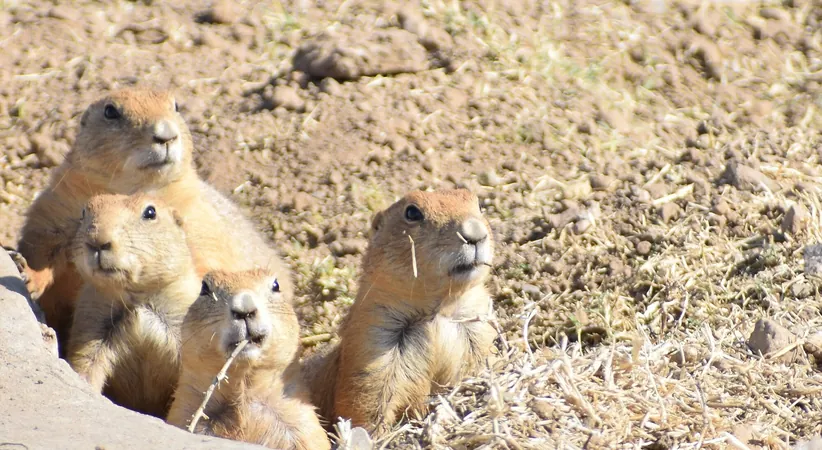
How Prairie Dogs Could Revolutionize Wildfire Management
2025-08-25
Author: Emily
In the relentless fight against wildfires, experts usually lean on cutting-edge technologies and innovative techniques. But what if the key to enhancing fire management is lying right beneath our feet?
According to Courtney Duchardt, an assistant professor at the University of Arizona, the answer could indeed be found among the burrows of black-tailed prairie dogs on the Great Plains. In her groundbreaking paper published in the journal BioScience, Duchardt argues that these small mammals might play a crucial role in reducing the spread and intensity of wildfires.
"Black-tailed prairie dogs not only munch on vegetation, but they also maintain it at a manageable height for spotting predators while creating open spaces that could halt fires," Duchardt explains. Their long-term presence encourages a shift in plant life from dense grasses to smaller flowering plants, creating a kind of natural firebreak.
Duchardt’s fascination with the relationship between prairie dogs and wildfire behavior grew during her research across the Great Plains, where she consistently noticed that prairie dog colonies appeared to modify the landscape. Intrigued by these findings, she and her team delved into existing research but found that only one out of 34 studies had examined prairie dogs' influence on wildfire.
This newfound link casts prairie dogs in a larger context of what are known as "disturbance regimes"—natural and human-induced events such as fires, floods, logging, and agriculture that shape ecosystems. While some of these disturbances can cause environmental harm, many are essential for maintaining ecological balance.
"Despite the challenges in managing prairie dog populations, they—and many other wildlife species—may provide ecosystem services that we haven't yet fully recognized," Duchardt warns. "If we overlook their value, we might find ourselves facing unexpected problems down the line."
The research team, which included specialists from the U.S. Department of Agriculture and several universities, emphasizes the importance of further studies and a more integrated approach to wildfire management. By factoring in prairie dog activity into fire behavior models, land managers could create more effective strategies for preventing and mitigating wildfires, especially in susceptible grassland areas.
In Arizona, different species of prairie dogs also help to control the spread of invasive plants like mesquite trees and lovegrass, further contributing to wildfire prevention.
As we learn more about these tiny but impactful creatures, it’s clear that prairie dogs could be more than just a cute addition to the plains; they might just hold the key to better fire management strategies.









 Brasil (PT)
Brasil (PT)
 Canada (EN)
Canada (EN)
 Chile (ES)
Chile (ES)
 Česko (CS)
Česko (CS)
 대한민국 (KO)
대한민국 (KO)
 España (ES)
España (ES)
 France (FR)
France (FR)
 Hong Kong (EN)
Hong Kong (EN)
 Italia (IT)
Italia (IT)
 日本 (JA)
日本 (JA)
 Magyarország (HU)
Magyarország (HU)
 Norge (NO)
Norge (NO)
 Polska (PL)
Polska (PL)
 Schweiz (DE)
Schweiz (DE)
 Singapore (EN)
Singapore (EN)
 Sverige (SV)
Sverige (SV)
 Suomi (FI)
Suomi (FI)
 Türkiye (TR)
Türkiye (TR)
 الإمارات العربية المتحدة (AR)
الإمارات العربية المتحدة (AR)